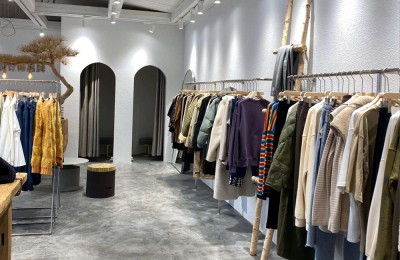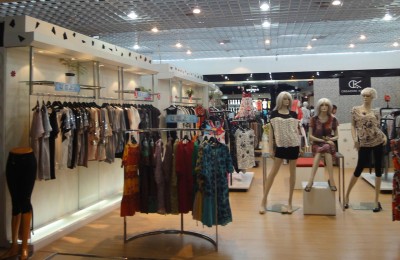On August 13, the Office of the United States Trade Representative stated that the Trump administration will postpone the 10% tariffs on certain Chinese products, including laptops and mobile phones, that were originally scheduled to begin next month.
Affected by this good news, US stocks, international oil prices, RMB exchange rate, etc. all rose to varying degrees.
However, the good times did not last long. On the evening of August 14, the U.S. debt showed the worst economic recession in recent years. Signal.
Affected by this, the Dow Jones Industrial Index plummeted 800 points in a single day, or 3.05%; the S&P 500 Index closed down 2.93%, at 2840.60 points; the Nasdaq Composite Index closed down 3.02% , reported 7773.94 points.
International oil prices also fell sharply. As of the close of the day, the price of light crude oil futures for September delivery on the New York Mercantile Exchange fell by US$1.87 to close at US$55.23 per barrel, a decrease of 3.27%. . The price of London Brent crude oil futures for October delivery fell by US$1.82 to close at US$59.48 per barrel, a decrease of 2.97%.
The raw material “died before leaving the battlefield”, and staged “ice and fire” in just two days “day”
The raw material of the polyester industry chain is crude oil. Because of the futures attributes of PTA, it is greatly affected by capital. Therefore, there is a huge impact in the capital market. During earthquakes, the polyester industry chain also tends to be under pressure.
On August 14, PTA futures rose sharply by 144 points, and the spot price also rose by 170 yuan/ton. The production and sales of polyester factories suddenly exploded, with average production and sales as high as 390%. Polyester filament prices The price has also increased by 50-100 yuan/ton.
This time the PTA has been silent for a week and has been gaining momentum, waiting for good news to come out From now on it will skyrocket. However, just the next day, bad news struck. Neither polyester production and sales nor international oil prices could save PTA’s decline.
As of the close of August 15, the closing price of the main 1909 contract of PTA futures was 5290 points, a decrease of 54 points or 1.01% from the previous trading day.
In terms of production and sales, the average production and sales of polyester factories plunged directly from 390% on the previous day to 60% %, a decrease of 6 times from the previous day!
PTA’s “Six Out of Qishan” project failed, and fundamentals accounted for the main reason
This year’s PTA price has At a historical low, PTA processing fees have also dropped significantly, and profits have been greatly compressed compared to before.
Since late June, upstream manufacturers have begun to speculate on raw material prices. The main areas of speculation include Sino-US trade relations, production and sales, international oil prices, etc.
Zhuge Liang’s “Six Expeditions from Qishan” failed because the Shu Han’s national power was not enough, and the upstream manufacturers tried their best to raise the price of PTA. The reason was similar.
According to an “old master” who has been engaged in the textile industry for more than 20 years, he started to enter the textile industry Since the beginning of the industry, the market has never been as bad as this year.
On the one hand, there is a large number of peripheral water-jet looms, and the supply of conventional products exceeds demand; on the one hand, Sino-US trade relations are tense, and foreign trade exports are tightening; on the other hand, the textile market is difficult to enter. During the business cycle, the garment industry is under severe pressure. The superposition of several negative factors has resulted in a bleak situation for the textile industry this year.
In July, a large number of weaving companies took a “high temperature holiday”, and the operating rate of water-jet looms dropped significantly; although the operating rate rebounded in August, the overall order situation in the market It hasn’t started yet, conventional products are still unsaleable, and corporate production and operations are still tight.
There is news in the market that some time ago, in order to relieve financial pressure, a large factory suddenly sold 1 million meters of 300T pongee at a price of 1.5 yuan/meter, which was lower than the market price. The previous price of 2.8 yuan/meter was almost half lower, and some weaving companies said that they had not shipped a large shipment for more than a month.
With the downstream situation like this, even if weaving companies believe their own judgment and think that raw materials will rise, they are still unable to stock up on a batch of goods. Therefore, the price of PTA cannot be increased. In the final analysis, it is still Because weaving companies don’t have that much liquidity in their hands.
Rising raw material prices have become an “impossible mission”
Currently, the market has two judgments about the weaving market in the second half of the year: one is that during the traditional peak season in September, the market demand for conventional products is very large.��A lot of inventory can be sold out quickly; the other, on the contrary, believes that there is no so-called “peak season” in the textile market in the second half of the year, and seems to have no confidence.
The former judgment is too optimistic, while the second judgment is too pessimistic. The future trend of the textile market In what direction will it develop?
The editor judges that the market situation in the second half of the year may be similar to the first half of this year, because compared with the first half of the year, the overall environment of the textile market has not changed significantly. We are still faced with problems such as overcapacity and a sluggish apparel industry. It is difficult for the market demand for textiles to increase or decrease significantly in a short period of time.
If that time really comes, weaving companies that are currently under pressure may continue to be under pressure from inventory, sales and other aspects. At the end of the year, due to inventory problems, a situation similar to the “high temperature holiday” in July is likely to occur again, and then it may become an “early annual holiday.”
For the upstream polyester industry chain, it has experienced several failed attempts to increase prices, and a sharp rise in raw material prices in the short term has become an “impossible task.” After September, as the weaving market improves and overall demand picks up, raw material prices may rise for a while, but it will be difficult to rise by thousands of yuan like in previous years because the fundamentals no longer allow it.
Since July, PTA has suffered several “price increases have not been half-way but collapsed in the middle” Something happened. Every time there were signs of a rise, they were quickly extinguished. This is still the case this time. The hype methods that were very effective in the past have now lost their effectiveness. The fundamentals are so weak that a sharp increase in the price of polyester raw materials in the short term has become a luxury. This is also a good thing for weaving companies with tight funds. </p







